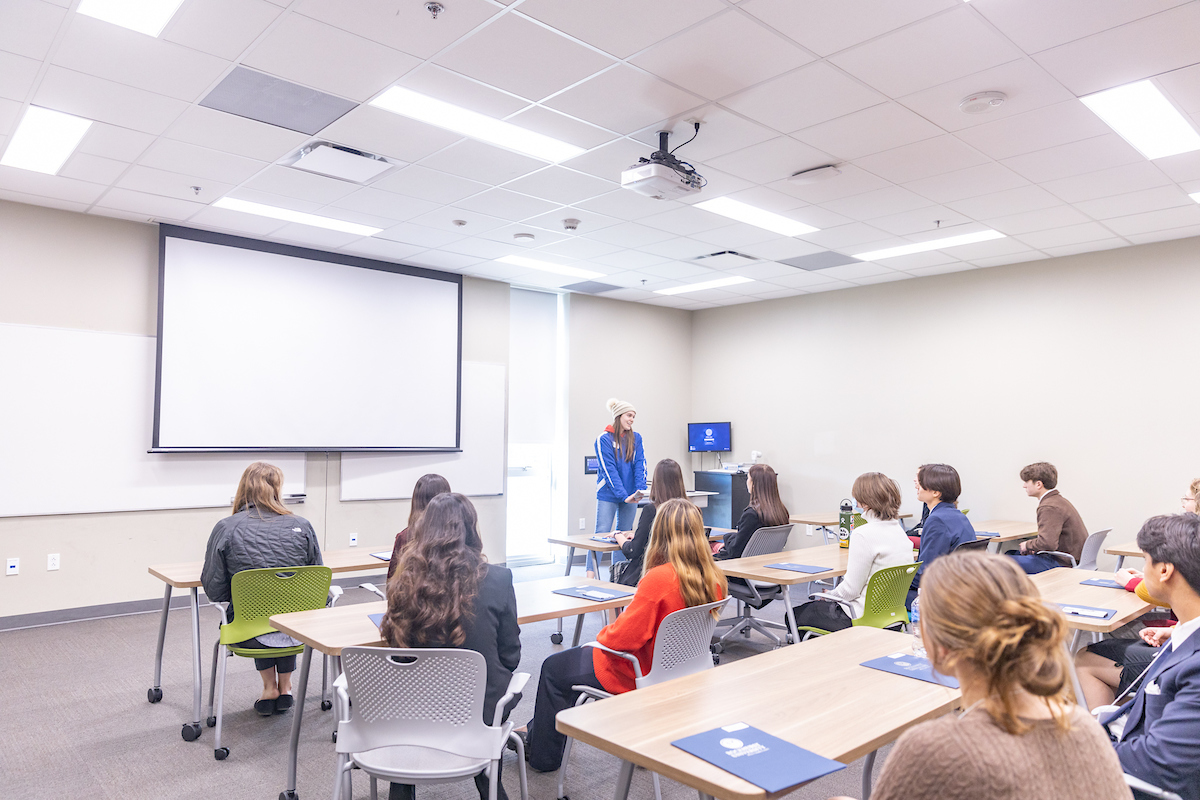
Designing an Accessible Classroom
Ensuring equal opportunity for quality education for all students requires the commitment of every faculty and staff member at Rockhurst University. If you have questions regarding how best to accommodate a student with a disability, please contact the Student Accessibility Services Coordinator.
Why Accessibility?
Rockhurst's reason for being is "To create a more just world through inclusive, innovative, and transformative education." That inclusive is one of three words with which we choose to modify education to highlight who we are, a place where everyone should feel safe and valued. Each term, Rockhurst University currently provides accommodations to 5% of the undergraduate population and 15-20 students in the graduate school. Whether you are a staff member or a faculty member, at some point you will be interacting with a student (or another employee) who has a disability. We all have an obligation to provide access and services to every student.
Universal Design
Rockhurst strives to provide accessible coursework to our students. Although accessibility and UDL are not synonymous, they do support one another. UDL provides a framework for designing courses with a diverse group of learners in mind, and accessibility ensures that all materials, activities, and technology used in the class are accessible to students. Captioned videos are a good example of how UDL and accessibility work together. By captioning videos, you not only make them accessible for students who are Deaf or hard of hearing students, but this also benefits English language learners and students who absorb information more thoroughly through reading. Accessible materials benefit all students, not only those with disabilities.
Accessibility Through a Student’s Perspective
*insert videos and links
Syllabus Statement and Accessibility
Syllabus Statement
Rockhurst University is committed to ensuring equal access to all qualified students with disabilities in accordance with the Americans with Disabilities Act (ADA). If you have a disability that may impact your ability to access or participate in any aspect of my class, please contact Student Accessibility Services (SAS) at drc@rockhurst.edu or (816) 501- 4037. SAS will work with you to determine what disability documentation/information is needed in order to provide accommodations. Accommodations are determined on an individualized basis and may take some time to put in place, so early notification to SAS is helpful. If accommodations have already been approved, please communicate with the instructor (s) of this course. More information is available on our Student Accessibility Services page on the Rockhurst University website.
Accessibility Features in Canvas
*How to use accessibility features in Canvas
*Accessibility Report
*Immersive Reader & Alternative Formats
Closed Captioning on Videos
Although providing a video with closed captions involves several steps, none of these steps are that difficult or time-consuming.
- Generate automated speech-to-text captions to your file. These are a good start, but do not meet ADA requirements for closed captions (see video description on how to do this below)
- Edit your captions
- Publish your captions
Caption Requirements
The FCC clarifies that captions should be:
- Accurate: Captions must match the spoken words in the dialogue and convey background noises and other sounds to the fullest extent possible.
- Synchronous: Captions must coincide with their corresponding spoken words and sounds to the greatest extent possible and must be displayed on the screen at a speed that can be read by viewers.
- Complete: Captions must run from the beginning to the end of the program to the fullest extent possible.
- Properly placed: Captions should not block other important visual content on the screen, overlap one another or run off the edge of the video screen.
Using Studio in Canvas
Becca Hedge has created instructions for using Studio to generate, edit and publish captions. For further assistance, contact eLearning or Becca Hedge.
Making Documents Accessible
Blackboard Ally
What is Blackboard Ally? How does it help with accessibility? Blackboard Ally works seamlessly with your Learning Management System (LMS) to gauge the accessibility of your content while providing tips on improving student accessibility. Blackboard Ally is directly integrated into our Canvas site. The main benefits of checking your Ally report are:
- Receive feedback on the accessibility of your content
- Improve content accessibility with Ally's step-by-step instructions
In addition to providing you with insight into your content's accessibility, Ally automatically creates alternative versions of your files. This allows students to choose the type of file they want that best suits their needs.
Note: You're encouraged to think about accessibility in every iteration of your course. If you work on the process of making each aspect of your course accessible over time, the task is less daunting.
*Insert videos and links
PowerPoint
*Insert videos and links
Word Files
*Insert videos and links
PowerPoint Files
*Insert videos and links
Adobe Acrobat PDF Files
*insert videos and links
Adding Extended Time onto Quizzes and Assessments
*insert two videos about how to add extra time on tests and quizzes
